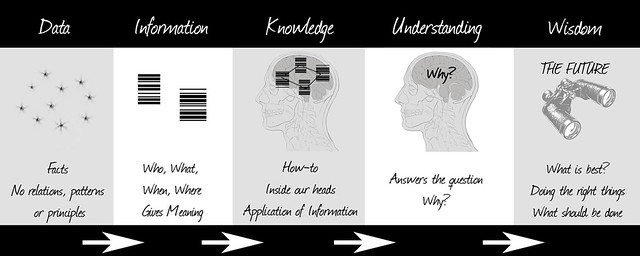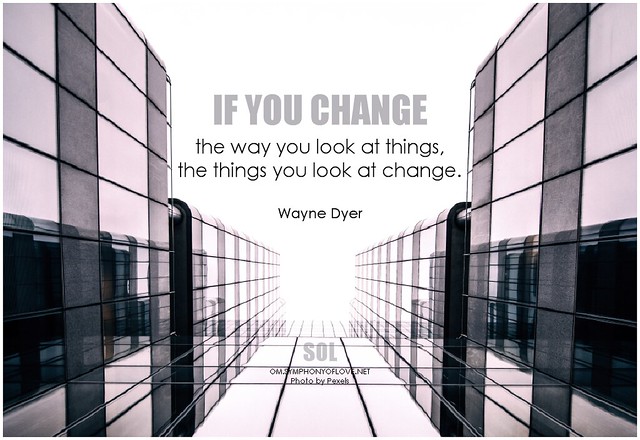|
|
|
Archive for the 'Golden Oldies' Category
Monday, May 6th, 2019

Poking through 12+ years of posts I find information that’s as useful now as when it was written.
Golden Oldies is a collection of the most relevant and timeless posts during that time.
I was looking for a particular post that tied to one I’m writing for tomorrow, but couldn’t find it. However, I did find three I think worth sharing, because they also apply, albeit indirectly I hope you enjoy them..
Read other Golden Oldies here.
A look at education, especially MBAs.
From a Harvard-educated CEO.
Excellent article. Very true. It took me years to unlearn what I’d been taught at business school…
From a post about why companies need managers and how to build them.
Good managers aren’t born; they are developed through a learned set of skills combined with the right attitude and culture.
The importance of accurate org charts.
Historically, companies’ reluctance to publish simple, accurate, current org charts has been anchored in a fear that “they”—whether headhunters or competitors—would steal their best and brightest. But when corporate (or managerial) paranoia leads to withholding information making the job more difficult, there’s no need to worry about people being recruited because they’ll be out actively looking!
Image credit: Ron Kroetz
Posted in Golden Oldies, Hiring | No Comments »
Monday, April 29th, 2019
Poking through 11+ years of posts I find information that’s as useful now as when it was written.
Golden Oldies is a collection of the most relevant and timeless posts during that time.
Back in the late 2000s, when blogs were newish, there was a thing called Wordless Wednesday. The idea was to present your thoughts on a subject with a picture, instead of words. Anyway, I came across this one and it fit so well with a post I’m working on I decided to make it this weeks Oldie.
Read other Golden Oldies here.

Image credit: Nick J Webb
Posted in Golden Oldies, Personal Growth | No Comments »
Monday, April 22nd, 2019

Poking through 11+ years of posts I find information that’s as useful now as when it was written.
Golden Oldies is a collection of the most relevant and timeless posts during that time.
Bad writing isn’t age related. Bad writing spans all ages and keeps getting worse. You deal with it daily in email, web content, hardcopy marketing material, resumes, and, the worst, information and instructions from the boss. Decoding bad writing is not only time-consuming, but can also be downright scary if a design change or product launch depends on it.
Read other Golden Oldies here.
Bosses, business coaches, academics, bloggers and many others bemoan the lack of communications skills in Gen Y, especially written communications, but they have plenty of company in preceding generations.
Not just bad writing, but opaque writing, the kind that leaves readers scratching their heads wondering what they are missing.
Of course, I shouldn’t complain, since one of my company’s most popular products is Clarity RE-writing, which involves using the fewest possible words to present even the most complex information in the most understandable way.
Who are the worst writers?
Granting that many of Gen Y don’t understand the difference between writing and texting, I find lousy writing much more offensive when it comes from those who (should) know better.
And while the more lofty their position the more offended I am, I save my greatest reaction for those old enough and senior enough to know better who work in the field—in other words, they are, or should be, professional communicators.
Charles H. Townsend, the chief executive of Condé Nast Publications, which includes Vogue, The New Yorker and Vanity Fair, is such a one. He recently sent a 500 word memo to his staff, here is a sample from it.
“…a consumer-centric business model, a holistic brand management approach and the establishment of a multi-platform, integrated sales and marketing organization.”… “To optimize brand revenue growth, we will shift responsibility for single-site, digital sales and marketing to the brand level. Publishers can now fully leverage their offerings across all platforms.”
Don’t feel badly if you aren’t sure what he is trying to say, his staff wasn’t sure, either.
If you want to write clearly here is some quick and basic guidance.
-
-
- Avoid jargon;
- shun multi-syllabic words;
- use short, simple sentences;
- pass on large blocks of text, especially on the Net;
- spell check everything; and, most importantly,
- never forget that most people scan and don’t actually read.
Image credit: Karin Dalziel
Posted in Communication, Golden Oldies | 1 Comment »
Monday, April 15th, 2019

Poking through 11+ years of posts I find information that’s as useful now as when it was written.
Golden Oldies is a collection of the most relevant and timeless posts during that time.
Before the bubble burst in 2008 I was writing a blog called Leadership Turn for b5 Media. The comments left led to a four post series. The Siemens bribery scandal brought me back to the subject in 2008 and I returned to the subject in 2009. It’s fluidity and changing definitions have always fascinated me (you can find more recent posts by using “ethics” as your search term).
Unlike those who see ethics as black and white, I’ve always seen them as shifting and changing with society. My favorite example of that change is murder. Every society condemns murder, but labeling a killing as such depends who died — no slave was ever murdered by their owner.
Finally, it’s good to keep in mind that legal doesn’t mean ethical and ethical isn’t synonymous with moral.
Read other Golden Oldies here.
Ethics and Corporate Leadership August 27th, 2007
Are Ethical Values Set or Fluid? August 29th, 2007
So You Think You’re Ethical… September 11th, 2007
The Quandary of Ethics September 14th, 2007
Legal Isn’t Always Ethical May 29th, 2008
The Changing Face Of Right And Wrong April 3rd, 2009
More Ethical? Not That Simple April 10th, 2009
Image credit: BK
Posted in Ethics, Golden Oldies, Personal Growth | No Comments »
Monday, April 8th, 2019

Poking through 11+ years of posts I find information that’s as useful now as when it was written.
Golden Oldies is a collection of the most relevant and timeless posts during that time.
Long after I wrote this I read something that says much the same thing, only far more memorably.
“Life should not be a journey to the grave with the intention of arriving safely in a pretty and well preserved body, but rather to skid in broadside in a cloud of smoke, thoroughly used up, totally worn out, and loudly proclaiming “Wow! What a Ride!” — Hunter Thompson
Read other Golden Oldies here.
I’ve always thought of life as a corridor with dozens of doors opening, each one representing an opportunity.
You may open one or pass them by—it’s your choice.
Each time you do open one and enter that door closes forever and you move down a new corridor full of doors.
The door you entered is sealed because whatever lay behind it changed you, so you can’t go backwards, only forward.
Some people to through life opening as few doors as possible, changing as little as possible and staying as safe as possible.
Others launch themselves through the most interesting doors with gusto, taking advantage of whatever opportunities are concealed and then on to the next door.
In honor of all those who are, or lean to, the latter description I dedicate these two Rules. They are especially apropos today.
Watch for big problems—they disguise big opportunities.
Welcome the unexpected! Opportunities rarely come in neat, predictable packages.
You can’t open every door and you don’t have to stay long if you don’t like what you find, but if you pass straight through never opening any doors you’ll stay in pristine condition and you don’t really want to arrive at the end as untouched as you were when you started — do you?
Image credit: (no longer working)
Posted in Culture, Golden Oldies, Personal Growth | 1 Comment »
Monday, March 25th, 2019

Poking through 11+ years of posts I find information that’s as useful now as when it was written.
Golden Oldies is a collection of the most relevant and timeless posts during that time.
Narcissism has increased dramatically since I wrote this in 2009. In 1963, when adolescents were asked if they considered themselves important, only 12 percent answered affirmatively. 30 years later, that percentage had risen to 80. And those numbers predate the rise of social media, especially Instagram, by a decade or more. By now that 805 probably includes most of the adult population, too.
Read other Golden Oldies here.
“Leaders tend to be narcissistic, but you don’t have to be a narcissist to be a leader.” –Amy Brunell, assistant professor of psychology at Ohio State University’s Newark campus.
“…narcissistic behavior is a “trait predicting charismatic leadership. People who are charismatic and charming… They think they’re entitled to it. They think they’re smarter than other people and they can get away with it.” –W. Keith Campbell, head of the psychology department at the University of Georgia in Athens.
Narcissism isn’t necessarily bad, but it is growing. When psychiatrists deemed it a bonafide personality disorder in the 1980’s it affected 1% of the population; in 2008 the number stood at around 6.2%.
Most politicians are narcissists, as are many media personalities (neither is surprising), but it seems that more and more business leaders fall in that category also.
There are 7 component traits that are measured.
-
- Authority
- Self-sufficiency
- Superiority
- Exhibitionism
- Exploitativeness
- Vanity
- Entitlement
Although I have no proof, I bet that most, if not all, tech titans (in fact, a good number of tech at all levels) would score fairly high on these traits, along with most of Wall Street.
“A study published in December in the journal Personality and Social Psychology Bulletin found that people who score high in these traits are more likely to be leaders, but these individuals don’t necessarily perform any better and potentially may become destructive leaders.”
So much for the much-ballyhooed ‘charismatic leader’.
Now let’s have some fun.
Go to Take the Narcissistic Personality Inventory and take the test.
Then come back and share your score and whether you believe it fits you.
My score was 11, but if I had taken it 30 years ago I think it would have been at least 5 points higher. (Age is either mellowing me or I’m more realistic:)
There are no right or wrong answers and even if you score off the narcissism charts that doesn’t mean you’re ‘bad’ — as with any trait it is how you handle it in everyday life that matters.
Image credit: Wikipedia Commons
Posted in Culture, Golden Oldies, Personal Growth | No Comments »
Monday, March 18th, 2019

Poking through 11+ years of posts I find information that’s as useful now as when it was written.
Golden Oldies is a collection of the most relevant and timeless posts during that time.
You got MAP (mindset, attitude, philosophy™), I got MAP, all us humans got MAP. MAP reflects your values — whatever they may be — and culture is MAP in action.
Read other Golden Oldies here.
What does the boss really contribute to their organization?
The culture; it’s the boss’ MAP that forms and shapes the culture for their organization.
It doesn’t matter if it’s a mom and pop operation, startup or global giant; whether the company has two, two thousand or twenty thousand employees; whether the boss is called owner, founder, president, or CEO.
Cultural ideas can’t percolate up from the ranks without a top boss who enables the bottom-up culture in the first place, as well as providing the fertilizer that allows ideas to bloom.
It’s not enough to announce the cultural attributes in which you believe, such as no politics, and then ignore political actions because you believe that your senior staff are adults and won’t engage in behavior that goes unrewarded.
Even those who manage culture by benign neglect must see to it that there are repercussions for actions that flaunt the corporate culture just as there are for actions that violate legal issues such as harassment.
And all this is just as true for the individual subcultures that establish themselves around every manager in the company all the way down through team leader.
Creating and caring for the culture should be written into every manager’s job description at every level.
If that seems a bit extreme, keep in mind that study after study has proven that culture affects productivity, engagement, innovation and retention.
Image credit: Kumar Appaiah
Posted in Culture, Golden Oldies, Retention | 1 Comment »
Monday, March 11th, 2019

Poking through 11+ years of posts I find information that’s as useful now as when it was written.
Golden Oldies is a collection of the most relevant and timeless posts during that time.
Engagement is way down, jobs are plentiful, turnover is way up, and managers aren’t just searching for solutions.
No, what they really want to find is a silver bullet; a Harry Potter magic wand they can wave to promote engagement, hike productivity, juice creativity and sustain the whole thing.
But as we all know, silver bullets and magic wands are in extremely short supply.
That said, VSI, as explained below, comes pretty close.
Read other Golden Oldies here.
How do you lead/influence/motivate/get/force others to move in the direction you choose or achieve a goal, large or small, that you set? That question is the basis for yards of books and megabytes of content, but in spite of all that’s already been written I thought I’d add my bit to the total.
After all, responding to this question is almost a right of passage in the land of leadership and motivation.
So here’s my two-word answer: vested self-interest (VSI).
Over the years, I’ve found vested self-interest to be not only the most powerful people motivator around, but also one of the least expensive, since the cost is mainly from the effort to learn what it is for each person.
And the idea must have merit when you consider that a Sudanese cell phone billionaire is using it to incentivize African heads of state to act responsibly.
In that case, the incentive was money, but that’s not always the case. If it were, then companies wouldn’t lose talent to other companies offering the same or even lower pay.
It’s an error to always assume that dollars will do it, or that what turns on one, turns on all. Hot buttons are as individual as your people are and don’t always involve tangibles.
As a manager, it’s up to you to discover each of your people’s hot buttons, i.e., what really turns them on, and then find a way to satisfy it in return for what you want in performance, innovation, etc.
Taking the time to learn what the buttons are allows you to power your team as never before, which, in turn, should give you the ability to satisfy your own VSI.
Remembering that generalities are always dangerous, here are some of the most common hot buttons
-
- public recognition – not just for big things, but for the small, everyday wins that fill most people’s working lives;
- strokes – a few words here, a compliment there, doesn’t take much time, but be warned, people aren’t stupid, if your comments are lip-service only they will know and respond accordingly;
- giving back – supported or encouraged volunteer programs, leave day banks, etc.;
- making a difference – internally and/or externally; and
- growing/stretching – the opportunity to do something new, learn new skills, etc.
Obviously, money is still a motivator, but it’s not always big bucks, it’s more that the amount is relevant to the accomplishment and logical relative to the company’s circumstances.
And it doesn’t need to be “new” money, it can be a different way to cut a current pie. For example, I get many queries from senior execs asking for exotic approaches and detailed how-to’s for implementing cultural and other intangible changes that often require encouraging (and at times, coercing) their managerial staff into actually doing them.
The most successful method I’ve found is as simple as one, two, three.
-
- Carefully define, in a quantifiable manner, what you want done (not “increase retention,” but “reduce turnover X% by [date]”).
- Include these well-quantified goals in the managers’ annual objectives. (This is not a variation of MBO.)
- Make it clear to your managers that they will be evaluated on these goals and that the evaluation will impact their annual reviews and compensation.
Vested self-interest should do the rest
And as any parent can tell you, VSI works great on kids, too — or anyone, for that matter.
Image credit: Quotes Everlasting
Posted in Culture, Golden Oldies, Motivation, Retention | 1 Comment »
Monday, March 4th, 2019

Poking through 11+ years of posts I find information that’s as useful now as when it was written.
Golden Oldies is a collection of the most relevant and timeless posts during that time.
Jerks, by whatever name, have been on the rise for awhile, but that seems to have escalated in the last couple of years, especially in the workplace. Not that jerk bosses are anything new, but they are getting more blatant.
Read other Golden Oldies here.
Although both articles I refer to are aimed at startup founders, I believe they are applicable to bosses at any level and in any company.
First, no boss ever accomplished their goals by being a jerk.
As Bob Sutton explains in The Asshole Survival Guide, treating people like dirt hurts their focus and saps their motivation. (…)
In the podcast, Reid [Hoffman] describes his test of a great culture: Does every employee feel that they personally own the culture?
Most jerks, no matter how unlikely that the comparison is valid, point to Steve Jobs to justify their actions, but consider how much more he could have done if he had been a better leader/manager..
It’s hard to find any boss who doesn’t recognize that culture is the most critical element in a company’s success.
However, what “culture” is has been twisted and warped out of all recognition.
These days “cultural fit” is the excuse of choice to indulge whatever biases, prejudices, and bigotry moves the hiring boss.
So, what does cultural fit really mean?
To answer that you have to understand what culture really is.
Culture is a reflection of the values of the boss.
Values have nothing to do with perks, food, or office buildings and everything to do with attitudes such as fairness, merit, transparency, trust, etc.
The point of cultural fit is to hire people whose personal values are, at the least, synergistic with the cultural values of the company.
Period.
That means that if the boss is biased, bigoted or a jerk, they will hire people who have similar values.
Image credit: Matthias Forster
Posted in Culture, Ducks In A Row, Golden Oldies | No Comments »
Monday, February 25th, 2019
 Poking through 12+ years of posts I find information that’s as useful now as when it was written. Poking through 12+ years of posts I find information that’s as useful now as when it was written.
Golden Oldies is a collection of the most relevant and timeless posts during that time.
Ryan’s post a couple of weeks ago reminded me of something I’ve wrote a long time ago.
The sum of it was not that great but in the moment it was contentious. Emails and gnashing of teeth on both sides. In that moment I was angry, but I chose to wait to respond.
My solution? Sleep.
Good solution, but when you’re a boss and something happens that makes you angry you usually can’t wait until the next day to deal with it.
So what do you do? Here’s a solution from the 1970s (and before). It worked then, it works now and it will work in the future.
Read other Golden Oldies here.
How angry do you become when you ask your team or colleague for X and get X — 4, or X + 1. or even Y? How often have you lost, or almost lost it, because of the response you received during a meeting?
What is the only perfect response you can make when something happens and you’re ready to blow your top?
You’ve heard the answer all your life—when you’re angry, shut up/stay quiet/ don’t say anything; don’t “look” anything, either, until you’ve calmed down. Smart advice, but hard to follow.
Many managers don’t even realize when they go into “screaming mode,” because they don’t actually scream—they drip sarcasm, leak contempt, stream scorn or fire off zingers; they belittle and role their eyes. Most don’t realize the long-term damage that they do to their people; others just don’t care—their attitude is that stuff happens, get over it!
What neither type seems to realize is that, over time, one of three things happen,
- people grow inured to their tantrums,
- are damaged by them (people do stay in abusive relationships),
- or leave the company.
To change this,
- you must first acknowledge to yourself that you do it and that you want to change it; then
- whenever you feel yourself getting angry smile, nod and leave by saying that you have to make a call, use the bathroom, whatever innocuous excuse best fits the situation;
- go somewhere private, blow off steam if necessary, but calm down;
- schedule a time to resume the discussion; then
- simulate the least amount of anger (if any) needed to get your point across.
It’ll take people time to trust the “new” you, but it’s worth it. In the office, it will pay off in higher productivity and less turnover. You and your people will suffer less from stress, and you, personally, will have more energy, enjoy higher quality sleep, and see improvement in all your relationships
Image credit: istolethetv
Posted in Communication, Culture, Golden Oldies, Motivation, Retention | No Comments »
|
 Subscribe to
Subscribe to
MAPping Company Success
About Miki 
Clarify your exec summary, website, etc.
Have a quick question or just want to chat? Feel free to write or call me at 360.335.8054
The 12 Ingredients of a Fillable Req
CheatSheet for InterviewERS
CheatSheet for InterviewEEs™
Give your mind a rest. Here are 4 quick ways to get rid of kinks, break a logjam or juice your creativity!
Creative mousing
Bubblewrap!
Animal innovation
Brain teaser
The latest disaster is here at home; donate to the East Coast recovery efforts now!
Text REDCROSS to 90999 to make a $10 donation or call 00.733.2767. $10 really really does make a difference and you'll never miss it.
And always donate what you can whenever you can
The following accept cash and in-kind donations: Doctors Without Borders, UNICEF, Red Cross, World Food Program, Save the Children
*/
?>About Miki
About KG
Clarify your exec summary, website, marketing collateral, etc.
Have a question or just want to chat @ no cost? Feel free to write
Download useful assistance now.
Entrepreneurs face difficulties that are hard for most people to imagine, let alone understand. You can find anonymous help and connections that do understand at 7 cups of tea.
Crises never end.
$10 really does make a difference and you’ll never miss it,
while $10 a month has exponential power.
Always donate what you can whenever you can.
The following accept cash and in-kind donations:
|













 Poking through 12+ years of posts I find information that’s as useful now as when it was written.
Poking through 12+ years of posts I find information that’s as useful now as when it was written. 
